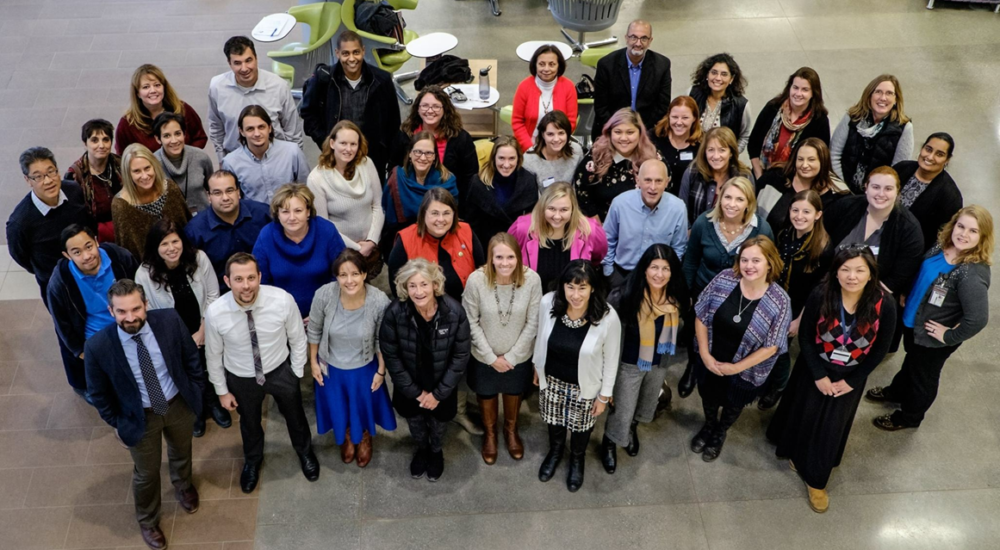By Jeané Blunt. When most people think about UC Davis – agriculture, animal science, and even Gunrock the mustang may come to mind. They likely don’t realize that UC Davis is home to more than 10,000 international students and scholars and has over 150 partnerships across 45 countries. UC Davis is also consistently ranked among the top universities hosting and producing Fulbright scholars and students.
At UC Davis, Services for International Students and Scholars (SISS) processes and provides support to these individuals, over 8,000 of whom fall under the regulations of the Department of Homeland Security’s Student and Exchange Visitor Program. Under the 2001 USA Patriot Act, the Student and Exchange Visitor Information System (SEVIS) database was created to record key data about international students and scholars, including arrival and departure dates, field of study or employment, and contact information.
All schools hosting internationals were under a mandate to begin using the database with very little time to prepare. For many, this also meant implementing an immigration tracking database or adopting a third-party solution that would allow for communicating with SEVIS. Only a few solutions exist, and UC Davis selected ISSM in October 2002.
The SEVIS requirements involved a lot of manual processes that resulted in high stress, an impossible workload, and high counselor turnover rate. Students would come into SISS to pick up a required form if they couldn’t find it online. At the same time, they usually stuck around to ask a few questions. The front desk staff got so overwhelmed that it had to limit the number of questions a student could ask before being referred to a counselor.
There were only two counselors to serve over 2,600 students. “Students needed to fill out the form and get it signed by an academic advisor in the Dean’s office,” explained Jodi Barnhill, SISS systems analyst and SEVIS coordinator. “Once signed, they’d meet with an academic advisor to look everything over, then drop the form off at SISS. For the student, this was not a user-friendly experience.”
The need to streamline processes only got more intense as the international populations that SISS supports increased. From 2008 to 2017, the number of students and scholars grew from 1,768 to 6,778, and 1,931 to 2,224, respectively. At the same time, regulations and presidential executive orders have become increasingly more complex. To make matters even more difficult, hard copy documents have had to be tracked, filed, and stored to meet a complex set of retention periods. SISS was simply running out of physical space to keep these files!
In 2012 UC Davis created a position to help streamline and modernize all the associated international student and scholar processes. That’s when Barnhill, formerly a SEVIS coordinator at the University of Illinois, was hired. She led the selection and implementation of a replacement for ISSM to enable better workflow and automation, as well as better batch processing to SEVIS.
SISS decided in late 2013 to migrate Sunapsis, a state-of-the-art electronic international case management system. SISS staff had to do a lot of work, building the necessary web forms and developing a web portal, called iGlobal. And by December 2015, SISS successfully completed the migration of over 30,000 immigration records and hundreds of thousands of documents to Sunapsis. It also launched iGlobal, offering its first web-based form for international students in December 2015, and for scholars in late 2016.
Fast forward to fall 2018. Now international students go to iGlobal to make all requests (over 30 different types), while scholars and departmental contacts use it for most requests. Since the implementation of Sunapsis and iGlobal, SISS employees have spent less time managing paper files and looking for information. With more automation, employees have been able to devote more one-on-one time to students and scholars. In this video interview, Rob Davis, an advisor with SISS, describes how the system allows him to spend more personalized time with students.
The system has proved so successful that other universities are regularly reaching out to SISS to find out more about Sunapsis. Barnhill recommends doing the implementation as a multi-phase project. She said, “The first year you implement and stabilize. In phase two, office staff learn how to leverage Sunapsis’ automated compliance alerts, communications, and workflow, as well as its embedded SEVIS browser that pushes and pulls data from SEVIS in real time and builds out the web forms that eliminate needless data entry.”
She continued, “The third phase, the Sunapsis checklist workflow, is the Holy Grail. During this magical phase, workflow processes become highly automated and, after a one-time configuration, Sunapsis does the bulk of the work.”
Barnhill said some other UC campuses are considering moving to Sunapsis. Her advice? “Don’t be afraid, it’s a rewarding experience and there are people that will help. There is a state-of-the-art solution for international offices and for international case management software. It will revolutionize operations and workflow. You will easily save four hours per day. It will be painful, but it is so worth it.”
 Jeané Blunt is IT communications and UC FCC licensing coordinator at UC Office of the President.
Jeané Blunt is IT communications and UC FCC licensing coordinator at UC Office of the President.








I just want to apply to this programme. Thanks for this inspiring article. It was very informative.